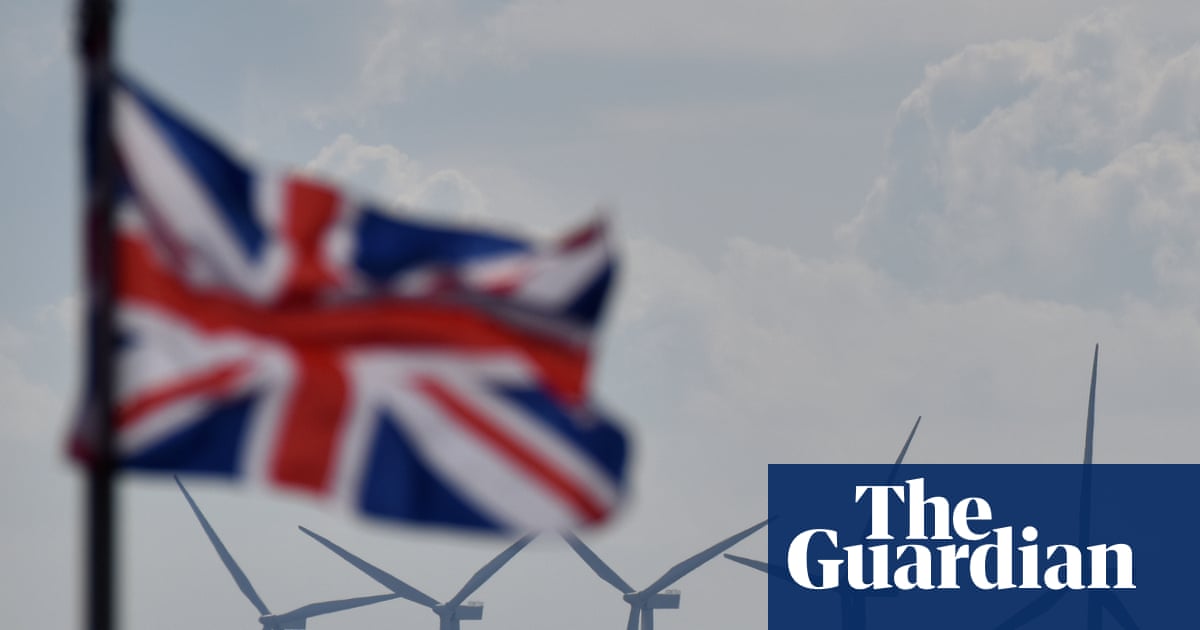Wind power has cut at least £104bn from energy costs in the UK since 2010, a study has found.
Users of gas have been among the biggest beneficiaries, the research suggested.
Research by University College London found that from 2010 to 2023, energy from windfarms resulted in electricity bills being lower by about £14.2bn than they would have been if gas had been needed to generate the same amount of power.
However, the reduction in the cost of gas that could be attributed to wind generation – owing to the cut in demand and not needing to build new infrastructure – was much greater, at about £133.3bn.
Over the same period, consumers paid about £43.2bn in green subsidies, levied on electricity bills rather than gas bills. The net result was a reduction of £104.3bn in UK energy bills over the 13-year period, according to the researchers.
Surging renewable energy generation across Europe made demand for gas – and thus gas prices – lower than they would otherwise have been, and meant electricity companies had less need to build costly new gas-fired power stations, according to the analysis. The way that the UK’s energy market works also means gas-fired power stations are in effect allowed to set the price of electricity.
The analysis applied to 2010-23, leaving out the lingering impacts of the leap in gas prices in early 2022, when Russia invaded Ukraine.
Colm O’Shea, a former hedge fund manager, now a master’s student at UCL and lead author of the report, said: “Far from being a financial burden, this study demonstrates how wind generation has consistently delivered substantial financial benefits to the UK. To put it into context, this net benefit of £104bn is larger than the additional £90bn the UK has spent on gas since 2021 as a result of rising prices related to the war in Ukraine.
“This study demonstrates why we should reframe our understanding of green investment from costly environmental subsidy to a high-return national investment.”
Mark Maslin, a professor of Earth system science at UCL, said the UK’s consumers would benefit to a greater extent if the electricity market were reformed to reflect the reality that wind generation was reducing bills. “At some stage, the UK government must decouple gas and electricity prices,” he said. “That would mean gas prices would reflect the global markets, while the electricity price would reflect the savings from wind and solar.”
Ana Musat, the director of policy at RenewableUK, the trade body for the wind sector, said: “This research highlights the long-term economic benefits for UK plc of investing in renewable energy generation. The only way to reduce energy costs for good is to minimise our exposure to volatile global fossil fuel prices and increase the share of electricity generation from clean homegrown sources.”
after newsletter promotion
The government disappointed the wind industry and renewable energy advocates on Monday by setting out a lower amount of available subsidy than some had hoped for in an auction for new offshore wind capacity. Only about £1.1bn was made available in the auction.
Musat said: “The wind industry alone employs 55,000 people and this is set to double to 110,000 by 2030. Every gigawatt of offshore wind brings £2bn-£3bn in private investment to the UK. That’s why it’s so important that we procure significant volumes of new wind and solar capacity in the auction for clean power contracts, with the budget set at an ambitious level to enable us to make the most of the opportunity to stabilise the cost of energy.”
Michael Shanks, the energy minister, said: “Our competitive new auction process will allow us to buy the right amount of clean power at the right price on behalf of the British people, so we can take back control of our energy.”
Separately, analysis from the Energy and Climate Intelligence Unit thinktank found that in the 10 years since the Paris agreement was signed in 2015 there have been far greater increases in renewable energy generation than was envisaged at the time.
In 2015, BP predicted that non-fossil fuels would take a 38% share of global power generation by 2035, but already they account for 41%. Solar and wind generation today are four times what the International Energy Agency in 2015 forecast they would be.
The deployment of electric vehicles has also risen faster than expected: the 2015 target of 100m EVs on the road by 2030 is likely to be hit in two years.
Ed Miliband, the energy secretary, said: “Clean homegrown power is the right choice for families, industry and the nation for many years to come. Wind power is cheaper, cleaner and more secure than new gas – helping us bring down bills for good.
“And with a competitive new process to secure more wind in our upcoming renewables auction, we will take back control of our energy and bring the next generation of opportunity to British coastlines and heartlands.”
